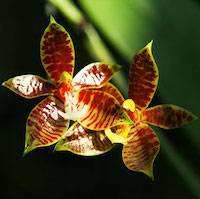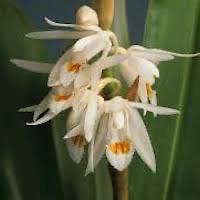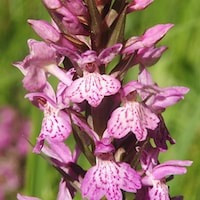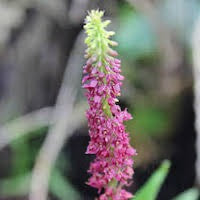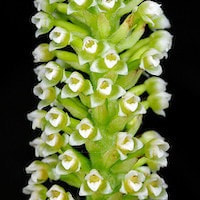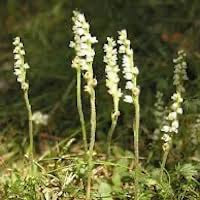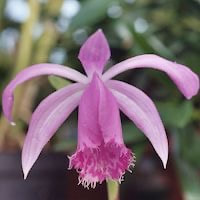Discover the Tranquil Woody Essence of Women Fragrance Oil Woody 2
The fragrance contains scented notes of several orchids, including the native Singaporean orchid Phalaenopsis Cornu-Cervi. This orchid, known for its star-shaped and long-lasting flowers in various colors, adds a spicy cinnamon scent to the fragrance. It has been selected by the Monetary Authority of Singapore to appear on their $5 silver coin.
Additionally, the fragrance incorporates therapeutic orchid notes such as Coelogyne stricta, which is used in northeast India to promote bone healing, and Dactylorhiza salina, valued for its sweet and astringent root tubers used to treat edema and inflammation in Mongolia. Another therapeutic orchid, Dienia ophrydis, is used in Taiwan as an antipyretic and diuretic, and Goodyera procera is known for its ability to alleviate various conditions such as tuberculosis and weak kidneys.
Furthermore, Pleione bulbocodioides, also known as the Taiwan single leaf orchid, is included in the fragrance and has herbal uses in China and Vietnam for combating food poisoning, boils, and insect bites.
The fragrance is complemented by additional scent notes of Woody Orchid bark, Tonka Bean, and Amber, creating a complex and enticing aroma.
Additionally, the fragrance incorporates therapeutic orchid notes such as Coelogyne stricta, which is used in northeast India to promote bone healing, and Dactylorhiza salina, valued for its sweet and astringent root tubers used to treat edema and inflammation in Mongolia. Another therapeutic orchid, Dienia ophrydis, is used in Taiwan as an antipyretic and diuretic, and Goodyera procera is known for its ability to alleviate various conditions such as tuberculosis and weak kidneys.
Furthermore, Pleione bulbocodioides, also known as the Taiwan single leaf orchid, is included in the fragrance and has herbal uses in China and Vietnam for combating food poisoning, boils, and insect bites.
The fragrance is complemented by additional scent notes of Woody Orchid bark, Tonka Bean, and Amber, creating a complex and enticing aroma.
Download the guided mediation that works best with this Orchid fragrance oil
| women_woody_essential_oil_orchi_00002.mp3 | |
| File Size: | 115667 kb |
| File Type: | mp3 |
Unveiling Therapeutic Serenity Through Fragrant Oils
Contains Scented Notes of following in various proportions:
Native Singaporean Orchid notes: Phalaenopsis Cornu-Cervi
|
Phalaenopsis Cornu-Cervi - Used in Woody 2 (Women) for Team building Perfume workshop
Phalaenopsis Cornu-Cervi is a specific orchid variety that has been utilized in the creation of a scent called Woody 2 (Women) for a Team Building Perfume Workshop. This orchid has gained recognition and distinction as it was chosen by the Monetary Authority of Singapore (MAS) to be featured on their $5 silver coin. The Phalaenopsis Cornu-Cervi orchid is characterized by its rachis, which bears 7 to 12 flowers arranged in two rows. These flowers possess a captivating fragrance that is long-lasting. The orchid exhibits various color forms found in nature, ranging from dark cinnamon-red with banded or blotched patterns to yellow and pale green. The star-shaped flowers of Phalaenopsis Cornu-Cervi are not only visually appealing but also emit a distinct scent. The fragrance carries spicy cinnamon notes, adding a warm and enticing element to the overall aroma. With their longevity and beautiful color variations, these flowers contribute to the appeal of the scent and make it an intriguing choice for the perfume workshop. |
Therapeutic Orchid notes:
|
Coelogyne stricta (D. Don) Schltr. Syn Coelogyne elata Lindl.
Indian name: Harjojan Coelogyne stricta (D. Don) Schltr., also known as Coelogyne elata Lindl., is an orchid species with a notable scent. It is referred to as Harjojan in India. The phytochemistry of Coelogyne stricta has revealed the presence of two compounds: 9,10-dihydrophenanthropyrone and a 9,10-dihydrophenanthrene called coelonin. These compounds are classified as phytoalexins and have been found to exhibit bacterostatic and fungistatic activities. This means that they have properties that can inhibit the growth or reproduction of bacteria and fungi. In traditional practices, Coelogyne stricta has been utilized for its medicinal properties. In northeast India, it is employed to promote the healing of bones and is externally applied to fractured limbs, aiding in the recovery process. Additionally, in Nepal, a poultice made with the pseudobulbs of this orchid is applied to alleviate headaches and fever. The therapeutic usage of Coelogyne stricta showcases the potential benefits of this orchid species in traditional medicine, particularly in bone healing and relieving symptoms such as headaches and fever. The presence of phytoalexins in this orchid may contribute to its medicinal properties and further research can explore its potential applications in various fields. |
|
Dactylorhiza salina (Turez exLindl.) Soo
Mongolian name: Martsnii tsakhiram Tibetan name: Ban lag Dactylorhiza salina (Turez exLindl.) Soo is an orchid species that possesses a distinctive scent. It is known as "Martsnii tsakhiram" in Mongolia and "Ban lag" in Tibetan. This orchid is primarily found in damp and swampy alkaline meadows across various natural zones in Mongolia. Its natural habitat indicates its preference for such environments. In traditional herbal practices, the root tubers of Dactylorhiza salina are highly regarded. These tubers are reported to have a sweet and astringent taste. They are commonly used to treat conditions such as edema (accumulation of fluid), inflammation, and to enhance vitality and overall well-being. The orchid is in high demand in Mongolia and is utilized as an ingredient in several traditional Mongolian prescriptions, highlighting its valued medicinal properties. The herbal usage of Dactylorhiza salina suggests that it has been recognized for its potential therapeutic benefits in traditional medicine, particularly for its effects on edema, inflammation, and vitality. Further research can explore the specific compounds responsible for its scent and medicinal properties, offering insights into its potential applications in modern medicine or fragrance industries. |
|
Dienia ophrydis (J. Koenig) Seidenf. syn. Malaxis latifolia Sm., Anaphora lipaarioides Gagnep.
Chinese names: Kuoyezhao Lan (broad-leaf mud orchid) Huazhu Lan (pillar flower orchid), Guangyeruanye Lan (floral pillar orchid), Xiaozhu Lan (small pillar orchid), Guangyexiaozhu Lan (tiny flower, small pillar orchid), Suihuaxiaozhu Lan (broad-leaved, small pillar orchid), Ruanyezhao Lan (soft- leaved mud or terrestrial orchid) Laotian names: Louang Prabang : Van dong. Vientiane: Van nam Dienia ophrydis (J. Koenig) Seidenf., also known as Malaxis latifolia Sm. or Anaphora lipaarioides Gagnep., is a shade-loving terrestrial orchid species with various names in different languages. In Chinese, it is referred to as Kuoyezhao Lan (broad-leaf mud orchid), Huazhu Lan (pillar flower orchid), Guangyeruanye Lan (floral pillar orchid), Xiaozhu Lan (small pillar orchid), Guangyexiaozhu Lan (tiny flower, small pillar orchid), Suihuaxiaozhu Lan (broad-leaved, small pillar orchid), and Ruanyezhao Lan (soft-leaved mud or terrestrial orchid). In Laotian, it is known as Van dong in Louang Prabang and Van nam in Vientiane. This orchid species blooms during different periods in various regions. In Taiwan, it flowers from May to June, while in most parts of the continent, it blooms from August to December. In Assam, India, the flowering season is observed from May to June. Dienia ophrydis is commonly used as an herb in Taiwan. The entire plant is utilized for its medicinal properties. It is known to have antipyretic (fever-reducing), diuretic (increasing urine production), detoxicant, and anti-inflammatory effects. It is also used to reduce swelling. In Vientiane, Laos, the tubers of this orchid are specifically used to make a paste for application to burns. The extensive usage of Dienia ophrydis in Taiwan and Laos suggests its importance in traditional herbal medicine. Further research can explore the specific compounds responsible for its therapeutic properties, shedding light on its potential applications in modern medicine or skincare. |
|
Goodyera procera (Ker-Gawl.) Hook.
Chinese names: Tushagen (convex yarn root), Gaobanyelan (tall etched leaf orchid) Zhengxijiao (middle brook abaca/leaf), Zhengxi Lan (middle brook orchid) Chinese medicinal name: Shifengdan (stone wind pellet), Lanhuacao (orchid flower herb) Taiwanese names: Peng Sha Gen (borax root), Zheng Xi Jiao (straight stream leaf), Sui Hua Ban Ye Lan (spiking etched leaf orchid) Goodyera procera (Ker-Gawl.) Hook. is an orchid species with several names in Chinese and Taiwanese languages. In Chinese, it is called Tushagen (convex yarn root), Gaobanyelan (tall etched leaf orchid), Zhengxijiao (middle brook abaca/leaf), and Zhengxi Lan (middle brook orchid). Its Chinese medicinal names include Shifengdan (stone wind pellet) and Lanhuacao (orchid flower herb). In Taiwanese, it is known as Peng Sha Gen (borax root), Zheng Xi Jiao (straight stream leaf), and Sui Hua Ban Ye Lan (spiking etched leaf orchid). This species is classified as endangered in India but is widely distributed in Nepal, Bhutan, China, and Hong Kong. Goodyera procera has various traditional medicinal uses. It is believed to have therapeutic properties that include dispelling wind, eliminating dampness, nourishing blood, relaxing muscles and tendons, removing numbness, and promoting recovery from hemiplegia (paralysis of one side of the body). The plant is known to relieve rheumatism, relax muscles, invigorate blood circulation, soothe the lungs, suppress coughs, and stop bleeding. It is used in the treatment of various ailments such as tuberculosis, weak kidneys, backache, jaundice, asthma, and traumatic injuries. Further scientific research on Goodyera procera can provide insights into its chemical composition and the specific compounds responsible for its medicinal properties. This knowledge may contribute to the development of new therapeutic treatments or herbal remedies. Additionally, considering its endangered status, conservation efforts should be undertaken to preserve and protect this valuable orchid species. |
|
Goodyera repens (L) R.Br.
Chinese names: Nantoubanye Lan (Pocket-sized, etched/reticulated leaf orchid), Xiuzhenbanye Lan (Pocket-sized etched leaf orchid); Goodyera repens (L) R.Br. is an orchid species known by various names in different languages. In Chinese, it is called Nantoubanye Lan (Pocket-sized, etched/reticulated leaf orchid), Xiuzhenbanye Lan (Pocket-sized etched leaf orchid), and Xiaobanye Lan (Small speckled leaf orchid). It is also referred to as Huasheyizhijian, which translates to "Floral snake single arrow." In North America, it is known as Dwarf rattlesnake plantain or Lesser rattlesnake plantain, while in Pakistan, it is called Creeping Ladies Tresses. This orchid is a small terrestrial herb with a tall, slim erect stem. It is widely distributed throughout the northern hemisphere, spanning from Scandinavia across Russia and China to Canada and the northern United States. It typically grows in shady areas with leaf-strewn, humus-rich, and moist soil in coniferous and deciduous forests, as well as in ravines and hill slopes. The life history of Goodyera repens is intriguing. The seeds are released in autumn and remain dormant until spring when they germinate. During summer, the seedlings reach a diameter of 1 mm, but they do not develop roots or leaves until the following summer, which marks their fourth growing season. Individual plants may take up to 8 years to flower. After flowering, the stem dies down, leaving a cluster of axillary shoots that form a colony. In terms of phytochemistry, Goodyera repens contains a small amount of alkaloid and produces a compound called loroglossin. This orchid has a long history of traditional medicinal usage. In Chinese herbal medicine, the entire plant is used to nourish the lungs and kidneys and relieve pain. It is employed to treat various ailments including fever, weepy sores, tuberculosis, coughs, weak lungs, weak kidneys, asthma, dizziness, backache, nocturnal emission, impotence, and snake bites. In India, Goodyera repens is used to address women's health issues, stomach ailments, and bladder diseases. The chewed leaves are applied to reptile bites, while mashed leaves are used to prevent infant rash. Additionally, it has been employed as a medicinal ingredient called "salep." It is important to note that further scientific research is needed to fully understand the chemical constituents and mechanisms of action underlying the medicinal properties of Goodyera repens. This can potentially lead to the development of new therapeutic treatments or applications based on its natural compounds. |
|
Pleione bulbocodioides (Franch.) Rolfe
Chinese names: Taiwanyiye Lan (Taiwan single leaf orchid), Yiye Lan (one leaf orchid), Dusuan Lan (single bulb orchid), Bingqiuzi (iceball) Japanese name: Sanjiko (This name also applies to Cremastra appendiculata) Vietnamese names: Som tu co, Mao tu co Pleione bulbocodioides (Franch.) Rolfe is an orchid species known by various names in different languages. In Chinese, it is called Taiwanyiye Lan (Taiwan single leaf orchid), Yiye Lan (one leaf orchid), Dusuan Lan (single bulb orchid), and Bingqiuzi (iceball). In Japanese, it is known as Sanjiko, which also applies to Cremastra appendiculata, and in Vietnamese, it is called Som tu co and Mao tu co. The name Pleione is derived from Greek mythology, where Pleione was the mother of the Pleiades, a small cluster of stars in the northern sky known as the Seven Sisters. The genus name was given by Mr. David Don, who wanted to indicate the characteristic clustering of pseudobulbs in these orchids. Pleione bulbocodioides is a popular orchid among collectors in the USA and Europe. In terms of herbal usage, China supplies Vietnam with the pseudobulbs of Pleione bulbocodioides, which are used to combat food poisoning and intoxication. They are also employed for the treatment of boils, snake and insect bites, as well as for clearing phlegm, acting as an antipyretic, and detoxifying the body. The whole plant is used to address wet sores, sore throat, and even rabies. Traditionally, it was regarded as a counter-poison and was used for snake bites in China. Pseudobulbs were also utilized in the treatment of tuberculosis and asthma. Regarding phytochemistry, several compounds isolated from the pseudobulbs of Pleione bulbocodioides have exhibited strong anti-inflammatory activity. One of these compounds is amentoflavone, which acts as a potent, caffeine-like calcium ion (Ca2+) releaser. It inhibits the expression of COX-2, thereby displaying anti-inflammatory properties. Amentoflavone has shown significant antiviral activity against influenza A and B viruses, as well as moderate activity against HSV-1 and HSV-2. It induces apoptosis (programmed cell death) in B16F-10 melanoma cells and inhibits angiogenesis (formation of new blood vessels) in melanoma and human breast cancer cells. This suggests its potential in developing new compounds targeting angiogenesis. Amentoflavone also inhibits angiogenesis in endothelial cells and stimulates apoptosis in hyperplastic scar fibroblasts. Additionally, it has been found to inhibit UVB-induced matrix metalloproteinase-1 expression in normal human skin fibroblasts, which could potentially help suppress skin photo-aging. In addition to amentoflavone, Pleione bulbocodioides contains other compounds with anti-inflammatory activity, including four new pyrrolidone-substituted bibenzyls (dusuanlansins A–D) and 19 other known compounds. These findings highlight the potential therapeutic properties of Pleione bulbocodioides and its constituents, particularly in the field of inflammation-related conditions. However, further research is needed to fully understand and utilize the pharmacological potential of this orchid species. |
Other scent note
Scentopia Library Reference ingredient
Petitgrain - Check details at Scentopia's scent library
Join Scentopia's wonderful orchid scent crafting, fragrance tour, bridal shower or corporate team building which includes perfume making onsite and offsite, beach activities and more. We also serve primary school learning journey, secondary students and pupil on industrial excursions. Know more about our orchids perfume bar or therapeutic orchid scents and other wellness aromas. Conatct Perfume workshop or book a scent crafting session here.
